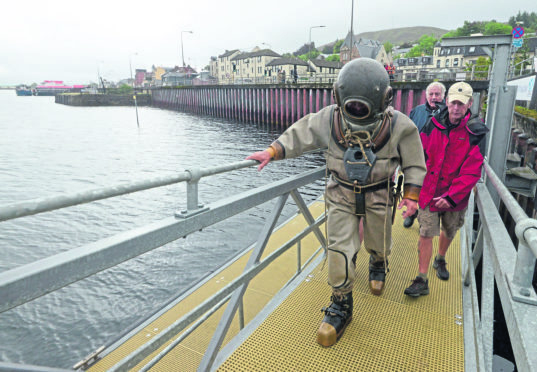Lochaber GP Finlay Wild made it nine in a row when he won one of Britain’s hardest races – up and down the UK’s highest mountain.
However, the woman’s record which had stood since 1984, was broken by Victoria Wilkinson, of Bingley Harriers, who beat Pauline Haworth’s previous best time of 1.43.25 by 24 seconds.
Fellrunner Wilkinson, 39, a remedial and sports masseur, last year also broke the women’s record for the gruelling Three Peaks Race, set nine years previously.
The Ben Nevis Race on Saturday saw around 600 athletes tackle the 4,411-feet high mountain over a distance of about 8.7 miles.
Mr Wild, 34, dominated the race.
But his winning time of 1h 27m 34s – a personal best for him – means that the 34-year-old men’s record for the race, one of the longest in athletics, stays in tact.
The record time is still held by Kenny Stuart with 1h 25m 34s.
It was in 1895 that William Swan, a Fort William barber, set off on the first recorded timed ascent and descent of Britain’s tallest mountain.
He could not have envisaged the modern day Ben Nevis Race which now has a maximum field of 600 runners – entries reached that point months ago – accepting a challenge “which is not for the unfit or faint-hearted.”
In the late 19th and early 20th centuries a number of races were organised on an ad hoc basis.
However it was not until 1951 that the Ben Nevis Race Association was founded with the intention of formalising arrangements for an annual race.
Since that first field of 21 runners, the race has grown beyond all recognition and it has been run every year since with the exception of 1980.
That year the elements won and, with competitors on the start line, a last minute decision was made to cancel the race for the safety of the runners and officials on the mountain.
In 1955, Kathleen Connochie, was the first woman to finish the course.
Entrants have to be experienced hill runners.
Competitors must be members of a bona fide athletic club and be at least 18 years and have completed three official Category “A” hill/fell races.
Runners who do not reach halfway in one hour or the summit in two hours will be turned back.
Competitors who do not complete the course in 3 hours 15 minutes will, subject to appeal to the committee, be refused entry to subsequent races.
Entrants must carry full waterproof body cover, including head covering and gloves and a whistle.
